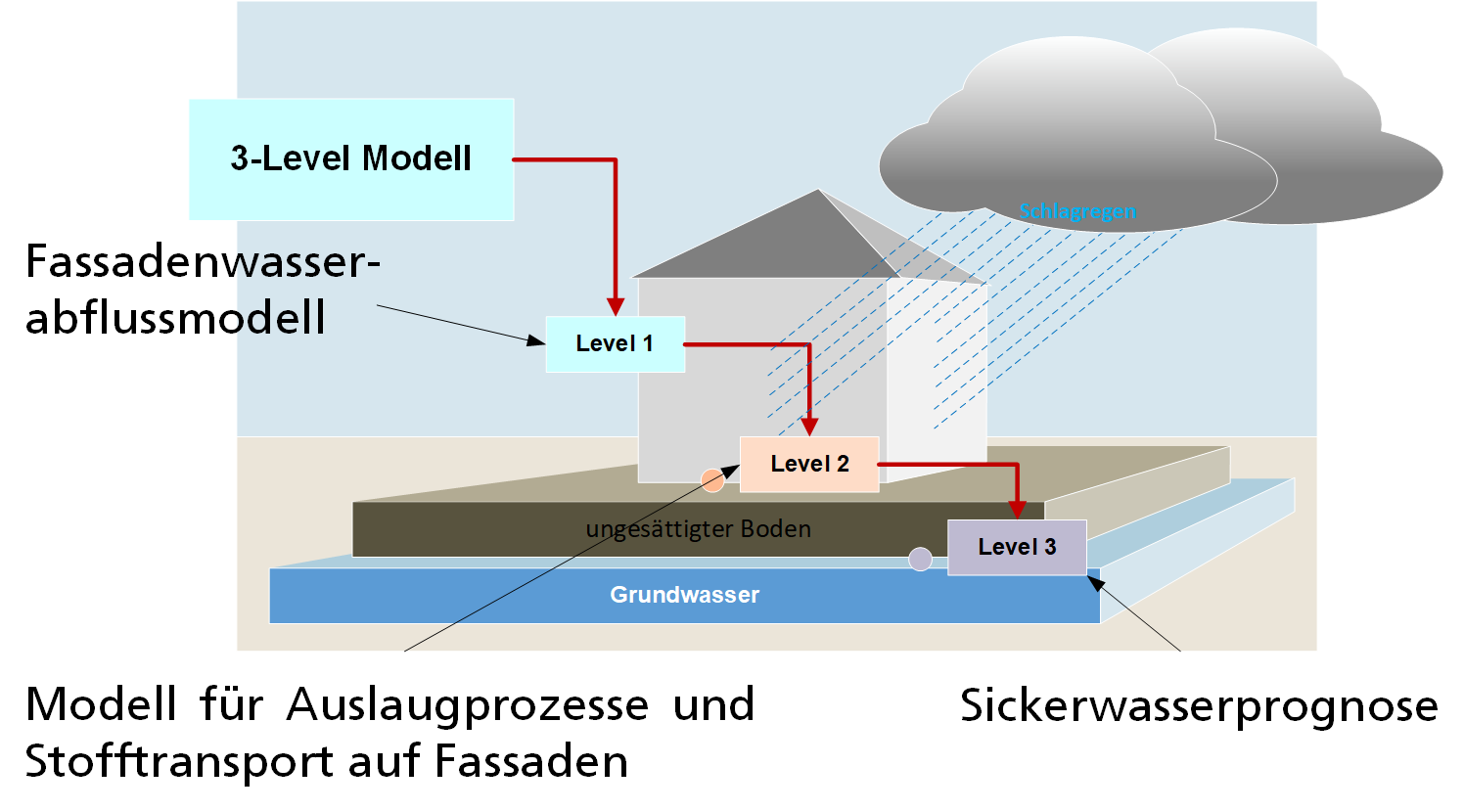A three-level model has been developed. In Level 1, the volume of rainfall runoff is calculated for a plastered façade during a fall of rain. In Level 2, the inorganic substances leaching from the building products are identified and the concentrations in which they occur determined. Lastly, in Level 3, the environmental properties of the products are evaluated. This is achieved by carrying out a so-called groundwater risk assessment.
The models can already be used to simulate the potential environmental impact of mineral formulations. To do this, various material properties of a product and the weather data of any given location must be entered into Level 1 and then run through Level 2. Finally, in Level 3, a “compliance statement” is obtained. Based on results from previous research projects, it appears unlikely that limit values will be exceeded at the assessment site.
